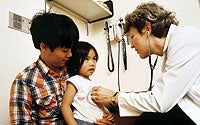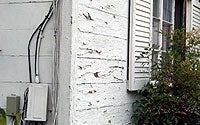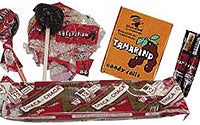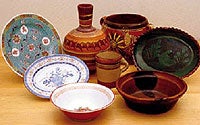Learn About Lead and Its Dangers
What is Lead
Lead (chemical symbol Pb) is a heavy, toxic, poisonous chemical element. It is a soft, malleable metal that is bluish-gray in color.
History of Lead Knowledge and Use
- Ben Franklin recognized the negative effects of lead in 1786; however, lead use and occupational exposures accelerated during the 1800s.
- The first time a case of lead paint poisoning was diagnosed was in Australia in 1895.
- Residential lead-based paint was sold in the United States until 1978. More than 38 million U.S. homes still contain lead-based paint.
- Why was lead added to paint? Better pigmentation, durability and corrosion resistance.
Lead Poisoning
Childhood lead poisoning is an environmental health problem that causes adverse effects on children's development and later in adulthood. In San Diego County, between 2017 and 2021, 231 children under the age of six received services from the San Diego County Childhood Lead Poisoning Prevention Program (CLPPP) due to lead poisoning.
How are we exposed to lead-based paint?
- The biggest source of lead exposure is from deteriorating lead-based paint on homes built before 1978.
- Twenty-eight percent of lead-poisoned people in San Diego live in homes in which lead-based paint or contaminated dust is a possible source.
- Normal wear and tear produces lead dust, the most common source of lead poisoning.
- Deteriorating paint produces dust and flakes.
- Disturbing intact lead-based paint during remodeling, renovation and maintenance can create a lead hazard.
- Other sources of lead can sometimes include pottery used for food, home remedies, candy, water, toys, soil, toy jewelry, decorative goods, hobbies and occupational exposures.
How does lead poison us?
- Swallowing lead dust or flakes. This is especially true for young children who crawl on the floor and put their hands and toys in their mouths.
- Breathing in lead dust during maintenance or renovation activities that disturb old paint.
- Lead can harm unborn children when lead from the mother’s blood passes to her unborn child.
How do we know if we have been exposed to lead?
The only sure way to know if you have been exposed to lead is to have a blood lead test. Doctors do not normally perform this test, so you must ask for it.
Children should be tested at 1 and 2 years of age and afterward as recommended by the child’s physician.

Usually, there are NO obvious symptoms, but symptoms of lead poisoning frequently include:
- Fatigue
- Irritability
- Headache
- Constipation
- Stomach ache
- Cramps
- Vomiting
- Weight loss
- Behavior problems
What are the health effects of lead in our bodies?
- Developmental problems
- Learning difficulties
- Behavior problems
- Brain and nerve damage
- Stillbirth and miscarriage
- Premature birth
- Low birth weight
The Centers for Disease Control and Prevention (CDC) uses a blood lead reference value (BLRV) of 3.5 micrograms per deciliter (µg/dl) to identify children with blood lead levels higher than most children’s levels.




